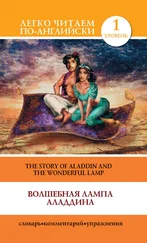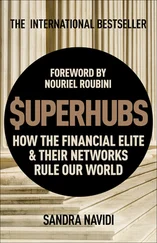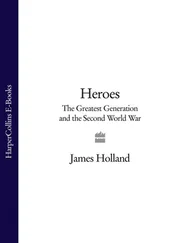Back at the restored Garden Court meanwhile, as part of the renovations the Court was planted with mulberry trees. The reason for the choice of trees was twofold. First, there was the practical consideration that the roots of the mulberry tree grow horizontally, rather than straight down into the ground: handy when the Bank of England’s gold vaults (which contain some 400,000 bars of gold) are directly underneath. Second, and more symbolically, the mulberry tree has played a critical role in the history of money. In seventh‐century China, the bark of the mulberry tree was used to make the earliest form of paper currency. The old saying has it that money doesn’t grow on trees. But in early China, it did; and when it arrived, inflation was swift to follow.
In 1271, the traveler and explorer Marco Polo set off for the court of Khubilai (otherwise known as Kublai Khan) the same year the latter established the Yuan Dynasty and became Emperor of China. Polo's journey to reach Khubilai's court at Shangdu took him four years and was not without incident: the fall of the city of Xiangyang in 1273 to Khubilai's troops was just one episode in which Polo was involved. All of this, and his impressions of Khubilai's court, Polo wrote up in a book that in France was traditionally called Le Livre des Merveilles (The Book of Marvels) and which is known in English more prosaically as, simply, The Travels .
Out of the many marvels that Marco Polo was struck by was the Yuan Dynasty's use of banknotes. “The emperor's mint is in this city of Khanbaliq,” he wrote, “and it is set up in such a way that might well say he has mastered the art of alchemy.” Polo described in detail how the Great Khan, as he called him, went about making the notes: “He has the bark stripped from trees – to be precise, from the mulberry trees whose leaves are eaten by silkworms. Then the thin layer of bast fiber between the bark and the wood of the tree is removed. After being ground and pounded it is pressed with the aid of glue into sheets like those of cotton paper, which are completely black. And when these sheets are ready, they are cut up into pieces of different sizes, rectangular in shape and of greater length than breadth. And they are made with such authority and solemnity as if they were cast from pure gold or silver … when everything has been done correctly the chief of the officials deputed by the emperor dips the seal entrusted to him in cinnabar and stamps it on the piece of money, so that the imprint of the seal dipped in the cinnabar remains impressed upon it; and then the money is legal tender.” 5
Polo's enthusiasm for paper money is proof of how far ahead China was in its understanding of monetary policy in comparison to their Western counterparts: it wasn't until the seventeenth century that paper bills began to be used in Europe. But what Marco Polo had been so impressed by, wasn't something new to China. In fact, the concept had its origins several hundred years earlier during the Tang Dynasty of 618–907. Here, bills of exchange, printed on pieces of textile, were used by businessmen and government officials to take money from one city to another. The notes were known as Feiqian or “flying money,” on account of the money being able to “fly” back without the need for coins or gold.
But it was not long after the invention of the idea that the appearance of inflation followed suit. An official version of Jiaozi, or certificate of exchange, was launched in 1023, with the stipulation that the notes were convertible to coins. However, the pressure on government finances due to fighting wars resulted in the printing of more Jiaozi. By devaluing the notes against the coins they were meant to represent, the result was a sharp rise in inflation – by 1107, there was 20 times the total amount of Jiaozi compared to the initial launch. The result was that the notes were ultimately withdrawn and replaced with a new set of notes: to avoid another round of rising prices, a set percentage of the printing of any new notes had to be matched by an increase in coin reserves.
By the 1160s, the now dominant Southern Song Dynasty added a further stipulation – all notes were to be recalled and redeemed for copper coins every three years. This was a system that held until, once again, the need to finance military activity saw a relaxing of these rules and the printing of paper notes rose again. By the time of Marco Polo's travels, the now dominant Yuan Dynasty had issued national paper currency, with which it guaranteed convertibility into silver, and banned the use of coins in trading, forcing the use of the new currency.
For a while, and during Marco Polo's visit, the system worked. But as the Mongolian Empire expanded, the monetary rules were not always followed through – gold and silver coins ended up being used in some places again. As with previous dynasties, the printing of additional notes to fund military activity was a harbinger of the end of the regime. The Yuan Dynasty's successor, the Ming Dynasty, began its reign in 1368 and would rule China for the next 277 years until the mid‐seventeenth century. To begin with, the new regime under Emperor Chu Yuan‐chang returned the money supply to coinage: in 1361, prior to his rise to Emperor, he ordered the making of a new mint of copper coins. Coins then became the sole currency until 1375, when lack of sufficient copper supplies saw a return to paper currency. However, the circulation of coins continued until the end of the century, and it was only via the third Ming emperor, Yung‐lo, that coins were successfully removed from circulation – a decision, perhaps unsurprisingly given previous Chinese rulers, that was the result of the need to fund military campaigns.
Both under Chu Yuan‐chang and Yung‐lo, the use of paper currency was marked by a sustained rise in prices. As described in Hyperinflation: A World History by He Liping, rice prices rose 6.6% annually for this 50‐year period and under Yung‐lo's rule, when paper currency was in sole use, it rose 11% annually. As well as rice, there were also large rises in the price of gold, silver, copper, and grain. The result was that by 1435, the paper currency was dropped altogether. Copper coins were minted again, as they would be for the remainder of the Ming Dynasty: silver, too, grew in circulation, with the government allowing people to pay their land tax in silver. Trade with the rest of the world also grew and this, too, was paid in silver.
Not only did the Ming Dynasty not return to paper currency, its successor – the Qing Dynasty – also eschewed the paper system for almost all of its 200‐plus years rule. The two exceptions to this were between 1651 and 1661, and between 1853 and 1861, both to fund military activity. In the latter case, Emperor Hsien‐Feng attempted to overcome previous problems by setting up a system of Coin Houses. The idea was that people with paper currency could exchange them for silver notes, which in turn could be exchanged for silver or copper coins. This convertibility, in theory, should have set the value of the notes and enforced people's faith in them. In practice, the Coin Houses didn't offer the full value of coins or silver notes but demanded substantial discounts in order to exchange them.
Today, the Ming banknote is a historical artifact, with an example on display at the British Museum, which was featured in the BBC series A History of the World in 100 Objects . The British Museum note is worth 1,000 coins, with the design showing a drawing of the number of coins it represents. In practical terms, it was clearly a great step forward: this one note was the equivalent of 3 kilograms or 1.5 meters of copper coins (Chinese coins at the time had a hole in the center so they could be collected onto a piece of string – a long piece of string in this case!). That was the theory, anyway. Fifteen years after the launch of the paper currency, this 1,000‐cash note was worth just 250 coins. And while a note from the time of the currency claimed, “ Whenever paper money is presented, copper coins will be paid out, and whenever paper money is issued, copper coins will be paid in,” the governmental urge to print more money rendered it unworkable. While the note bears the legend “to circulate forever” it is today instead a historic reminder of another system that went wrong.
Читать дальше












